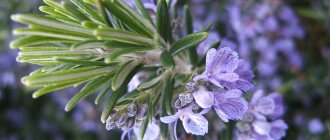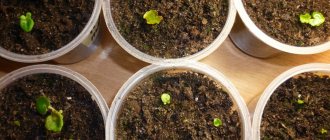Ornamental purslane is a colorful ground cover plant and is ideal for summer residents and gardeners who love unpretentious, low-maintenance, drought-resistant flowers. The plant is also suitable for growing in poor soils. The best way to get a plant on your site is to grow it from seeds at home. Thanks to seedlings, you can see earlier flowering.
General information about the plant
This plant has been known for a very long time. Already in the Middle Ages, it was grown as a vegetable crop and used as a medicinal plant. The popular name for purslane is rug. This is due to the fact that the plant spreads over the surface of the earth, like a carpet.
Many gardeners are familiar with the wild brother of this flower crop - purslane . The attitude towards him is not the most enviable - like a weed.
But it can also bloom, but the yellow flowers are very small. By the way, it is believed that garden purslane can be eaten. In addition, it contains nutrients and vitamins and is used for medicinal purposes.
The most popular decorative species is Purslane grandiflora. This is what gardeners grow on their plots as a decorative flower. Also popular is Terry purslane , it is a variety of large-flowered. Growing a flower from seeds at home is possible for both the first and second types.
In the photo on the left is a large-flowered purslane, and on the right is a double-flowered one:
The flower has branched, creeping stems, juicy fleshy leaves, which also surprise with their beauty, just like the flowers. The maximum height of the plant is about 20 centimeters. And the diameter of the flowers is about 3 centimeters. Flowering - from June to September.
Note! Decorative purslane is a perennial plant, but in Russia it is most often grown as an annual.
The flower mat looks perfect on alpine slides and is very successfully used as a decoration for borders. The creeping plant can be grown in flower beds in open ground, in flowerpots, vases, in balcony and window boxes. All of the options listed are interesting and beautiful.
By the way! If you like non-standard and original garden solutions, you can take advantage of the experience of some gardeners: growing decorative purslane between garden slabs that form paths in the garden.
Typically, seeds are sold that grow into colorful plants, so you can plant flowers that come in a variety of pleasing shades—red, yellow, pink, etc.
The most popular varieties with photos
The most common types and varieties of decorative purslane include:
- terry;
- Scheherazade;
- grandiflora;
- ampelous;
- Baroque;
- Royal;
- Flamenco;
- Air marshmallow.
When to plant purslane seeds for seedlings, in what month
The optimal time for sowing seeds of large-flowered and terry purslane for seedlings is in March and April . However, when choosing the best time to plant a crop, also focus on the weather and climatic conditions of the region in which you plan to grow from seeds. For example, in the Volga region and in the middle zone (including in the Moscow region) you can plant purslane from mid-March, in the south of Russia the optimal time is at the end of February and early March, in the Leningrad region, in Siberia, in the Urals it is better to sow in April.
You can also choose the appropriate timing for planting purslane according to the 2022 Lunar calendar:
- Favorable days: in January: 1, 10, 11, 15, 16, 19, 20;
- in February: 7, 8, 12, 13, 14, 15;
- in March: 10, 11, 15, 20, 21, 24, 25.
- Unfavorable days: in January: 2, 18th;
- in February: 1, 16;
- in March: 2, 16, 17, 18, 31.
Care
Until the seedlings fully take root, purslane bushes are regularly watered, but not overwatered, to prevent rotting of the roots. The soil around them is loosened and weeds are destroyed.
After new leaves appear on the seedlings and the seedlings become stronger, you will need to pinch the top of each plant. This will speed up the process of growth of side shoots, help to grow a dense bush and increase its vegetative mass.
Harvest
The first cutting of the stems is carried out 30-40 days after planting. After the next growth of the required number of stems and leaves, the cutting is repeated. Sometimes, after the green mass has re-formed, the bushes are completely pulled out of the ground in order to prevent flowering and seed dispersal and not to think about how to deal with purslane in the garden.
Additional Information! In warm regions, purslane seeds are sown directly into the ground in April, and this is done several times a season.
Shoots ready for cutting
Step-by-step instructions for sowing purslane seedlings
Proper sowing of seeds is a complex undertaking in which every step is important. Below you will find a description of the main stages of planting purslane seedlings at home, as well as photographs and diagrams.
Seed selection and preparation
To grow strong and strong seedlings of large-flowered or double purslane, you need to choose high-quality seeds. It is recommended to buy them from reputable stores and from a trusted and reliable manufacturer.
A distinctive feature of a good seed is that the packaging should contain detailed information about the variety, recommendations from the manufacturer on the timing of sowing, planting in the ground, contact information, production and expiration dates. The photo of a pack of purslane seeds shows that all the data is available:
Advice! You should not buy suspiciously cheap seeds or a product in dented or damaged packaging (storage conditions may have been violated, which will affect germination).
You can not only buy seed, but also collect it yourself . If you want to collect seeds yourself, it is better to do it from flowers that grow in pots:
- Before harvesting, it is necessary to move the plant indoors at the end of summer.
- When the seed pods turn brown after flowering, you can collect the seeds.
- In order to properly collect the seeds, you need to collect the boxes, dry them, and then open them.
- Place the seeds in a paper bag in a dry and dark place.
But you can also collect seeds from plants that grow in open ground. However, it is necessary to check the plants frequently after flowering, as the capsules open slightly when ripe.
Note! Purslane seeds can remain viable for up to three years. However, this is only possible if optimal storage conditions are observed - darkness, dryness, room temperature (without overheating or hypothermia).
As for the preparation of purslane seeds before sowing for seedlings, as a treatment, you can soak the flower seeds in a solution of a growth stimulant drug, for example, Epin-Extra, Zircon. Prepare the solution and soak the seeds according to the instructions on the preparation.
Since the seeds are very small (as can be seen in the photo below), they must be handled very carefully:
After soaking, you should filter them through a thick cotton cloth and let the cloth dry so that the seeds can be easily shaken off.
By the way! Seeds can be planted without pre-sowing preparation, but if you still want to protect yourself and strive for quick, friendly shoots and strong seedlings, you can process them.
Soil preparation
You should choose loose, light, neutral soil that has excellent air and water permeability.
Important! The crop cannot be planted in fertile soil containing black soil, compost, or humus.
It is optimal to sow purslane seeds in soil that you prepared with your own hands at home:
- garden soil (2 parts);
- sand (0.5 parts).
But you can also use a universal soil mixture for seedlings, although its composition also needs to be slightly edited:
- universal primer (2 parts);
- sand (0.5 parts);
- perlite (0.5 parts).
Advice! Experienced gardeners who have dealt with purslane seedlings more than once recommend adding charcoal to the soil mixture (1 part to 5 parts soil).
The seedlings of this flower crop are susceptible to a dangerous disease - blackleg, therefore, to prevent the disease, it is worth disinfecting the soil before sowing . It is most effective to bake in the oven (30 minutes, oven temperature - 90 degrees) or steam (1.5 hours over steam, stir regularly), and then pour in a solution of Fitosporin-M to populate the soil with beneficial microflora. You can also freeze or treat with a fungicide.
Selection of capacity
The best option for purslane seedlings is wide and shallow boxes and bowls . But you can also sow in individual containers: plastic cassettes, cups, peat pots, peat tablets.
The container must have drainage holes ! They are necessary to remove excess moisture and prevent soil acidification, as well as for watering, which is recommended to be done through a tray.
Direct sowing of seedlings
The scheme for sowing a flower for seedlings at home is simple: if you do everything carefully, then even a novice gardener can successfully cope with the procedure. Basic steps with photographs of planting purslane seeds for seedlings:
1) Place a drainage layer on the bottom of the container, about 1.5 centimeters thick. You can use perlite, pebbles, broken brick, expanded clay as drainage (it is used in the photo).
2) Fill the container with soil, but not to the brim (in case the seedlings begin to stretch out, then you will need to add more soil).
3) Moisten the soil with a syringe or spray bottle. The water should be soft, clean, warm.
4) Lightly press down the soil with your hand or spoon.
5) Now you need to sow. Since the seed material is very small, the seeds must be planted superficially . Do not plant too densely, as you will have to thin out later.
It is very convenient to sow purslane seeds with sand . The method is ideal for small seeds. To do this, mix a small amount of clean river sand with seeds and sow evenly over the surface of the soil.
- You can also simply sow purslane seeds with your hands: distribute them evenly over the surface, as if adding salt.
- Another very convenient option for sowing seeds for seedlings is in the snow. To do this, spread clean snow over the surface of the soil and scatter purslane seeds with your hand or using a white paper sheet. When the snow melts, the seeds themselves will be drawn to the required depth.
6) Moisten the soil surface with a spray bottle (you can use a growth stimulant solution).
7) Now you need to create a mini-greenhouse, which is necessary to create optimal conditions for germination of seedlings. To make a mini-greenhouse, simply cover the container with glass, a lid or film.
It is recommended to label the container and sign the name of the crop and the date of planting, so as not to be confused with seedlings of other plants.
 Move the container to a bright place where the temperature is consistently maintained at about 25 degrees Celsius, for example, near a heating radiator.
Move the container to a bright place where the temperature is consistently maintained at about 25 degrees Celsius, for example, near a heating radiator.
How to care for purslane seedlings
To grow healthy, strong purslane seedlings at home, you need to properly care for the seedlings:
- Before germination, plants must be kept in a greenhouse. But it is recommended to ventilate them every day, removing the film, glass or lid for 20 minutes, and wiping off condensation from their surface.
- When shoots appear, you need to remove the covering material forever.
By the way! With proper and complete care for purslane, the first shoots will appear in about 4-5 days (and maybe even on the 3rd day!).
In this photo the seedlings are three days old:
- Before emergence, the soil should be moistened using a spray bottle. And then it waters through a tray - the best option for purslane seedlings. To do this, you need to place a container with drainage holes in a pan with a small layer of water, and after an hour, drain the excess water from the pan. This method of watering will not only add the optimal amount of moisture, but will also stimulate the development of the root system.
- It is necessary to maintain light to very moderate soil moisture. It is impossible to overwater, as it is fraught with fungal diseases and death of seedlings.
- Pay special attention to water for irrigation. The seedlings of this crop do not like hard water, so they should be watered with settled, soft and clean water, which must be at room temperature.
- The air temperature in the room before germination is 25 degrees Celsius, and after germination of the seedlings and removal of the lid or film, it is necessary to change the temperature regime - it drops to +20°C.
- It is necessary to place the seedlings in a well-lit place, for example, on a south or south-west windowsill. The optimal length of daylight hours is 12-14 hours, so you should add phytolamps or LED lamps in the morning and evening. In cloudy weather, additional illumination should occur throughout the day.
- There is no need to feed; fertilizers will stimulate the development of green mass to the detriment of future flowering.
Brief description of cultivation
- Landing . Seeds for seedlings are sown in April, and grown seedlings are planted in open soil in June.
- Bloom . It starts in June and ends in mid-autumn.
- Illumination . Needs plenty of bright sunlight.
- Soil . Grows well on rocky or sandy soil, which should be dry and poor.
- Watering . Systematic. Its abundance depends on weather conditions and can vary from scanty to moderate.
- Fertilizer . Does not require fertilizing.
- Reproduction . Seeds.
- Harmful insects . Aphid.
- Disease . It is highly resistant to disease, but can be affected by a disease caused by the fungus Albugo portulaceae.
- Properties . This medicinal plant has an antiparasitic effect.
How and when to plant purslane seedlings
The optimal timing for picking purslane seedlings is determined by plant: the seedlings should form 2 well-developed true leaves.
The soil for the procedure can be used the same as for sowing. But you must use an individual container for picking - large cups made of plastic or peat, cassettes. And there should also be drainage holes at the bottom (except for peat pots, which already allow moisture to pass through perfectly). Diameter is at least 5 centimeters, but optimally 10.
Scheme for picking purslane seedlings at home:
- Pour soil into new containers.
- Make a small hole in the center of the cup using your finger or pencil.
- Pick up several seedlings using a plastic spoon or wooden stick; there is no need to shake off the soil from the roots.
- Transfer the seedlings into the hole and place them carefully.
- Carefully fill the hole and lightly compact the soil around it with your fingers.
- Place the cups on a tray of water so that the soil can become saturated with moisture.
Plants should be cared for after picking in almost the same way as before the procedure. You also need to water very carefully, maintaining very moderate humidity.
Planting purslane seedlings in open ground
Planting seedlings in open ground in a permanent place is a long-awaited moment of growing purslane from seeds at home. But in order for plants to be able to adapt normally to a new place and then bloom beautifully, you need to know certain rules and tricks of replanting.
Disembarkation dates
Purslane seedlings are planted in open ground when the threat of return night frosts has passed, that is, in May or June.
In different regions, due to different weather conditions, the transfer time is slightly different:
- in the Southern regions, the event can be completed as early as early May;
- in Siberia, the Urals, and the Leningrad region - in early and mid-June;
- in the central zone (including the Moscow region) and in the Volga region - in the second half of May.
Important! If you suspect that the air temperature may suddenly drop below 10 degrees, then it is better to postpone the procedure, since such a low t can destroy the plants.
Hardening
Hardening off purslane seedlings before planting in open ground will speed up and improve plant adaptation and make them more resistant to environmental factors. It needs to be done 2-3 weeks before the transplant and done gradually.
To properly harden seedlings, you need to wait for warm weather - at least 15 degrees Celsius. Then, for the first 2 days, open the window for several hours, then take it out onto the balcony or outside for 20 minutes for two days, then gradually increase the time every day. It is also very important to place the plants in the shade for the first few days, and then gradually remove them from the shade.
Selecting a location
The choice of a place for planting seedlings of any flower crop must be taken responsibly, because certain plants have different preferences, the satisfaction of which determines the health of the plants and the beauty of flowering.
Large-flowered or double decorative purslane is a sun- and heat-loving plant, so it is necessary to plant seedlings in an open and sunny place.
Since the ground cover flower does not like excessive moisture, you should avoid areas in the garden with excessive moisture, lowlands in which moisture accumulates, and places with high groundwater levels.
Important! It is optimal to plant purslane seedlings on hills with sandy or rocky soils.
To grow ornamental plants in open ground, it is better to choose poor soils . If planted on too fertile soils, the plant will actively develop green mass, and flowering will be less lush.
Scheme of planting in open ground
It is very simple to plant large-flowered or terry purslane seedlings in open ground, but you need to know the rules and planting scheme:
- water the plants two hours before the event;
- make holes in the area, they should be slightly larger in size than the pot with seedlings, the distance between the holes is 15-20 centimeters;
- Water the holes generously;
- transplant the plants into the holes without destroying the earthen clod, that is, by transshipment;
- the plant is not buried, you need to place the plant at the level at which it grew before;
- carefully fill the hole and lightly compact the soil;
- water.
Advice! It is better to plant purslane seedlings in open ground in the morning or evening.
Outdoor care
Decorative purslane can rightfully be called a very unpretentious, undemanding and drought-resistant flower. But it still needs minimal care: thanks to it, you will be able to see beautiful flowering, and the plants will develop normally and not get sick.
You need to care for purslane in open ground as follows:
- In the first week after planting in a permanent place, you should water the flowers several times for better adaptation and survival.
- Watering is carried out at the root, you need to use not cold, settled water. Watering in open ground, as when growing seedlings, needs to be very moderate to avoid unnecessary waterlogging. It is enough to moisturize once every six days.
- In very hot and dry weather, purslane should be watered a little more often, but remember that this ground cover plant is drought-resistant and does not like excessive moisture.
- There is no need to fertilize in open ground, otherwise the leaves and stem will become thick, and the flowers, on the contrary, will become smaller.
Pests and diseases of purslane
Large-flowered and double purslane are resistant to many diseases and pests. However, an unpleasant defeat by uninvited garden guests can still occur:
- If you find small spots on the leaves or the shoots begin to deform, it means that the plant has been affected by a fungal disease. To treat the plant, you need to spray the flowers with copper-containing preparations, for example, copper sulfate.
- Sometimes plants can be affected by aphids. To combat the pest, purslane should be treated with a solution of an insecticide preparation, for example, Agravertin, Ankara. If you notice signs of aphids, then you should not leave things to chance, because the pest can ruin a beautiful plant or even cause the death of the plant.
- The flower can be affected by the pest thrips, which appears in the form of specks or stripes of silver color. Also, as in the case of aphids, it is necessary to spray the purslane with an insecticide.
Important! To prevent damage to decorative purslane, high humidity should be avoided, which is what provokes fungal diseases.
Properly growing purslane from seeds at home is the key to ensuring that you get a beautiful, highly decorative plant in your dacha or the area of a private house. By providing minimal care to flowers outdoors, you can enjoy them for a long time.
Useful tips and common problems
Purslane for seedlings should be sown taking into account some recommendations from experienced gardeners. First of all, you should choose crop varieties suitable for planting and growing in a particular region. Purslane must have sufficient frost resistance and strong immunity to diseases and pests.
Before planting in the ground, the plant needs to be properly hardened off. Over the course of a week, the purslane is taken out into the open air, first for a couple of hours, and then for a full day. If you change the growing conditions too dramatically, the crop may die.
What to do if purslane seedlings have stretched out
Purslane is pulled from seeds for two main reasons:
- Lack of light. If the weather is cloudy, or the sun comes into the room for only a few hours a day, a phytolamp must be installed above the seedlings.
- No picking. If planted too tightly, the purslane will also stretch out as the shoots have to compete for light and nutrients.
Weak seedlings do not always die when transferred to open ground. But you can’t expect abundant flowering from an elongated purslane.
After planting, it is not recommended to place purslane for growing on a northern windowsill in an apartment
Why purslane seedlings fall and die after germination
If the purslane sprouted after planting, but the greenery immediately died, the reason is most often a lack of moisture or an excess of water. The soil must be sprayed very carefully, avoiding either waterlogging or drying out.
The death of the crop is caused by sudden changes in temperature. Day and night conditions after planting and cultivation should not be allowed to differ greatly. It is also necessary to ensure that the room temperature does not fall below 15 °C.











